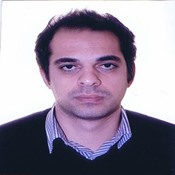Physics-Based Motion Artifact Simulation in CT/CBCT Images Using 4DCT Phases
S Alam1*, T Li1, S Zhang2, P Zhang1, S Nadeem1, (1) Memorial Sloan Kettering Cancer Center, New York, NY, (2) Peking University Cancer Hospital & Institute
Presentations
MO-IePD-TRACK 3-5 (Monday, 7/26/2021) 3:00 PM - 3:30 PM [Eastern Time (GMT-4)]
Purpose: To realistically mimic motion and scatter artifacts in lung CT and cone-beam CT (CBCT) using 4DCT phases and physics-based simulation. In our recent paper [1], we presented a new data augmentation pipeline for physics-based simulation of baseline CBCT scatter artifacts on planning CT to allow utilization of more accurate contouring. Here, we extend our pipeline to include motion artifacts.
Methods: 600 projections equivalent to a 60 second (10 projections/second) 4DCT scan were used for generating motion plus scatter/noise artifact induced synthetic CBCTs. First scatter artifacts/noises were extracted from week1 CBCTs using power-law adaptive histogram equalization method and induced to each 10 phases of 4DCT. Four projections/phase were repeated 15 times to reconstruct a 60 second scan. Hence, we reconstructed [4 projections/phase x 10 phases] x 15, equivalent to 600 projections for a 60 sec scan. Eventually, corresponding motion plus scatter artifact induced synthetic CBCT was reconstructed using CBCT reconstruction parameters using iterative Ordered-Subset Simultaneous Algebraic Reconstruction Technique. The geometric parameters used for reconstruction were taken directly from the clinical practice for CBCT reconstruction. Synthetic CBCTs were evaluated against their ground-truth CBCT using histogram comparison and structure similarity index (SSIM) & root mean square error (RMSE).
Results: The histogram of motion-artifact simulated data via our pipeline aligned very well with histogram against their ground-truth CTs and achieved RMSE and SSIM of 0.04 and 0.83, respectively.
Conclusion: We show that we can realistically simulate motion artifacts using our pipeline for CT as well as CBCT images using 4DCT phases. The augmented motion and scatter-artifact simulated data will allow to segment OAR/GTV structures across CT and CBCT images using the same 3D deep learning segmentation model we presented in [1].Ref:[1] Alam SR, et al. Generalizable cone beam CT esophagus segmentation using physics-based data augmentation. Physics in Medicine & Biology, 2021
ePosters
Keywords
Cone-beam CT, Motion Artifacts, Scatter
Taxonomy
Contact Email



